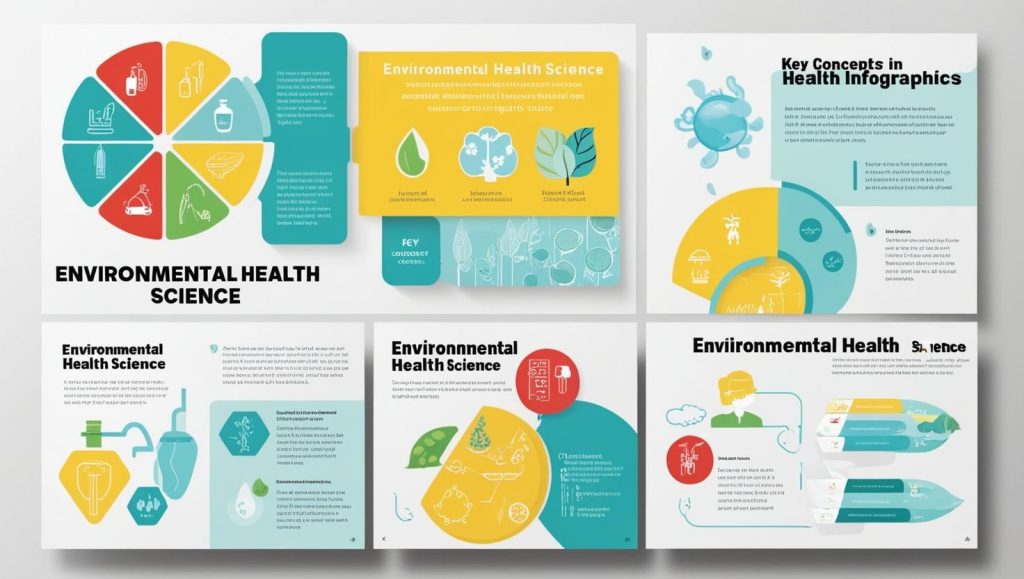Introduction
Environmental Health Science is an interdisciplinary field that studies how environmental factors—such as air, water, soil, and chemicals—affect human health. Students pursuing Environmental Health Science must understand key concepts like pollution control, toxicology, epidemiology, and environmental policies.

If you’re struggling with assignments, this comprehensive guide provides Environmental Health Science homework help, covering core topics, useful study resources, and expert strategies to help you succeed.
What is Environmental Health Science?
Environmental Health Science focuses on the interactions between humans and their environment. It plays a crucial role in disease prevention, public health improvement, and policy development.
Key Areas of Environmental Health Science
- Air Quality and Pollution Control – Understanding air pollutants and their impact on respiratory health.
- Water and Sanitation – Examining waterborne diseases and wastewater treatment.
- Toxicology and Hazardous Materials – Studying the effects of chemicals on human health.
- Occupational Health and Safety – Analyzing workplace hazards and developing safety protocols.
- Climate Change and Public Health – Exploring how global warming affects disease patterns.
Importance of Environmental Health Science
Environmental Health Science is crucial because it:
- Helps reduce exposure to harmful environmental hazards.
- Supports the development of public health policies.
- Aids in preventing diseases linked to pollution and contamination.
- Ensures safe water, clean air, and toxin-free food supplies.
External Resource:
- World Health Organization (WHO) – Research on environmental health and global public health initiatives.
Key Topics in Environmental Health Science
When seeking Environmental Health Science homework help, you may encounter these essential topics:
1. Air Pollution and Respiratory Health
Air pollution consists of harmful substances like carbon monoxide, sulfur dioxide, and particulate matter.
Effects on Health:
- Causes respiratory diseases like asthma and bronchitis.
- Increases cardiovascular risks.
- Contributes to climate change and acid rain.
External Resource:
- Environmental Protection Agency (EPA) – Regulations on air pollution and environmental policies.
2. Water Quality and Sanitation
Safe drinking water is essential for human health. Contaminated water can lead to:
- Cholera and typhoid outbreaks.
- Heavy metal poisoning (e.g., lead, mercury contamination).
- Harmful algal blooms affecting marine life and water safety.
External Resource:
- Centers for Disease Control and Prevention (CDC) – Waterborne disease prevention strategies.
3. Toxicology and Chemical Exposure
Toxicology studies how chemical substances affect living organisms.
Common Toxic Substances:
- Pesticides – Affect agricultural workers and consumers.
- Heavy Metals – Found in contaminated water and food.
- Industrial Waste – Can lead to cancer and other diseases.
External Resource:
- National Institute of Environmental Health Sciences (NIEHS) – Research on toxicology and hazardous chemicals.
4. Occupational Health and Workplace Safety
Many industries expose workers to hazardous materials. Key safety measures include:
- Protective gear (PPE) for workers handling chemicals.
- Regulations for factory emissions and hazardous waste disposal.
- Workplace safety training to prevent accidents.
5. Climate Change and Its Impact on Health
Climate change affects human health in multiple ways:
- Extreme heat increases the risk of heat strokes and dehydration.
- Changing weather patterns lead to the spread of infectious diseases.
- Rising sea levels contaminate freshwater sources.
External Resource:
- United Nations Environment Programme (UNEP) – Reports on climate change and environmental health.
How to Excel in Environmental Health Science Homework
1. Understand the Assignment Requirements
Before you start your Environmental Health Science homework, ask yourself:
- What is the specific topic? (e.g., air pollution, toxicology, environmental policies)
- Are there required case studies or examples?
- What type of sources should be used? (peer-reviewed journals, government reports)
2. Use Reliable Study Resources
Environmental Health Science requires accurate and updated information. Use:
- Google Scholar – For academic research papers.
- PubMed – For scientific health studies.
- National Geographic – Articles on environmental issues.
3. Structure Your Homework Properly
Introduction
- Define Environmental Health Science.
- Explain why it is important for human health.
Main Body
- Discuss core concepts (e.g., pollution control, toxicology, sanitation).
- Use real-world case studies.
- Provide statistical data to support arguments.
Conclusion
- Summarize key points.
- Suggest solutions for environmental health issues.
Common Challenges in Environmental Health Science & Solutions
1. Understanding Scientific Data
Many students struggle with data analysis and statistics.
Solution: Use statistical tools like:
- SPSS Software – Analyzing environmental data.
2. Writing Research-Based Essays
Environmental science assignments require proper citations and sources.
Solution: Use citation managers like:
- Zotero – For organizing research references.
3. Staying Updated with Changing Policies
Environmental laws evolve frequently.
Solution: Follow:
- Environmental Law Institute (ELI) – Updates on environmental policies.
Top Online Platforms for Environmental Health Science Homework Help
If you need additional Environmental Health Science homework help, these platforms can assist:
- Khan Academy – Free lessons on environmental science.
- Coursera – Online courses from leading universities.
- Chegg Study – Expert tutoring and textbook solutions.
- EdX – Public health and environmental science courses.
Final Tips for Success in Environmental Health Science
1. Stay Informed on Environmental News
Follow reliable sources like:
2. Participate in Environmental Research
Gain hands-on experience through:
- Internships with environmental organizations.
3. Engage in Online Study Groups
Join discussions on:
- Reddit r/environmental_science
- LinkedIn Environmental Health Groups
4. Work on Real-World Case Studies
Study successful environmental interventions, such as:
- The Clean Air Act – A U.S. law reducing air pollution.
- Flint Water Crisis – A case study on water contamination.
Conclusion
Environmental Health Science plays a critical role in protecting human health and the planet. Students studying this field must master topics like air pollution, toxicology, climate change, and sanitation.
By utilizing reliable resources and expert Environmental Health Science homework help, students can enhance their understanding and excel in their assignments.


